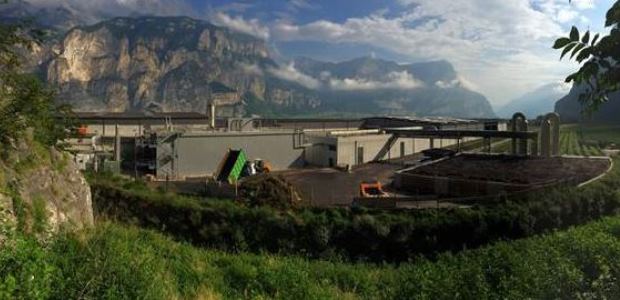
Waste as an Energy Source: the Path to a Low-Carbon Economy
Climate change, renewable energy, low-carbon economy: For some, these are catchwords and arguments for a global ecological rethink. For others, they stand for a business segment that couples environmentally friendly technologies with a clear vision to ensure we can leave a world worth living in for future generations.
p>The goals agreed at the 21st United Nations Climate Change Conference (COP21) in 2015 are an ambitious call for action: The aim is to keep global warming below 2 degrees C. For this to happen, the emission of greenhouse gases will have to be completely halted between 2045 and 2060, and the production of CO2 reduced to levels that can be absorbed by natural photosynthesis. According to current studies, this will entail stopping the burning of fossil fuels entirely from 2040 and switching completely to renewable sources of energy.
However, it is not just industry and transportation that are responsible for imbalances in the carbon cycle: Landfill sites currently account for around 8 percent of greenhouse gas emissions. Amid rising population numbers and the resultant volumes of waste, this number is also set to increase – experts expect waste volumes to reach 2.4 billion tons by 2025, producing 1,300 million tons of CO2-equivalent greenhouse gases. Consequently, sustainable waste management has a direct bearing on the global climate. Clean-tech companies, such as Swiss-based Hitachi Zosen Inova (HZI), are committed to addressing this issue with product portfolios comprising a range of complementary energy-from-waste (EfW), and power-to-gas (PtG) technologies.
Energy from Non-Recyclable Waste
In many parts of Europe, recyclables are collected separately, with the residual waste then processed in EfW plants. This trend is becoming increasingly more attractive in the United States and Canada because it offers a range of advantages, such as reducing or completely eradicating the need for landfill, cutting greenhouse gases, and protecting the human habitat from contamination and pollution. High-efficiency grate incineration with flue gas treatment and material recovery technologies ensure the smooth running of industrial, manufacturing, and municipal plants utilizing the environmentally friendly conversion of waste into energy, which is subsequently fed into the grid as base-load power to supply households and commercial and industrial facilities. Modern EfW plants, equipped with advanced technology, can deliver enough heat from a ton of waste to replace approximately 63 gallons of heating oil, for example, or generate 800kWh of electricity – enough to supply an average household in the United States or Canada with electricity for approximately one month, based on a total annual consumption of approximately 10,000kWh per year.
Green Waste to Natural Gas
In addition to renewable base-load power from EfW plants and hydro power facilities, biogas plants round out the energy generation portfolio. Kompogas® plants, operating in several hundred municipalities worldwide, convert green waste and biowaste into high-grade compost and fertilizer and also into biomethane, a storable fuel that can be used on demand. Renewable biomethane replaces fossil fuels and can be made available as renewable compressed natural gas for vehicles. One ton of green waste produces the equivalent of approximately 17 gallons of fuel, enough to power a vehicle an average of 420 miles. Alternately, it can generate 220kWh of power, enough to supply approximately 27 percent of the electrical energy needs for one month of an average North American household.
Power-to-Gas
Variable energy resources such as solar and wind often generate more power than is actually needed. Power-to-gas technologies, such as Etogas®, harness these peaks in renewable energy to produce synthetic natural gas at cheap rates from surplus energy. This is made storable and can be used flexibly, and on demand, by feeding it into the gas grid or converting it back into electricity to enable reliable power supply and demand-driven generation. Together with pumped-storage power plants, PtG technology is an effective means of regulating grids.
Necessity for Environmentally Friendly Technologies
The growing concern over management of municipal solid waste and its direct bearing on the global climate is emphasized in the report, "A Global Review of Solid Waste Management," prepared by the World Bank in 2012: "The global impacts of solid waste are growing fast. Solid waste is a large source of methane, a powerful GHG (greenhouse gas), that is particularly impactful in the short-term. Methane, which has a global warming potential 21 times greater than carbon dioxide, is the second most common greenhouse gas after carbon dioxide. Methane from landfills represents 12 percent of total global methane emissions."
The report indicates that "Greenhouse gas emissions from municipal solid waste can readily be reduced by generating less waste, improving the efficiency of waste collection, expanding recycling, aerobic composting, anaerobic digestion, and incineration waste-to-energy."
The development and progression of environmentally friendly technologies that support the above recommendations and address the realization of sustainable solid waste management provide a critical component toward achieving the goals envisioned by the 21st United Nations Climate Change Conference. Clean-tech companies are putting into place highly functional solutions toward achieving a realistic low-carbon environment, thereby playing an important role in reaching these goals.
This article originally appeared in the November 2017 issue of Occupational Health & Safety.